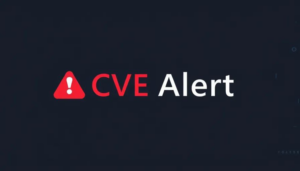CVE Alert: CVE-2020-25079 – n/a – n/a
CVE-2020-25079
An issue was discovered on D-Link DCS-2530L before 1.06.01 Hotfix and DCS-2670L through 2.02 devices. cgi-bin/ddns_enc.cgi allows authenticated command injection.
AI Summary Analysis
Risk verdict
High risk with active exploitation and a KEV-listed vulnerability; treat as priority 1 due to confirmed exploitation state.
Why this matters
Authenticated command injection on networked devices allows full compromise of the affected asset, enabling remote control, data access, and potential lateral movement in the environment. The impact on confidentiality, integrity and availability is substantial, with attackers able to execute arbitrary commands and disrupt service without user interaction.
Most likely attack path
An attacker with network access and valid credentials can target the CGI endpoint to inject commands, taking control of the device. Low privileges are required, no user interaction needed, and the scope remains unchanged, making initial access feasible on exposed networks or poorly segmented environments.
Who is most exposed
Devices in poorly segmented networks or exposed management interfaces (including remote admin capabilities) are at greatest risk, especially in SMB/branch setups where IoT cameras are reachable from less-restricted networks or the internet.
Detection ideas
- Unusual HTTP requests to the CGI endpoint with command-like payloads.
- Evidence of command execution or shell activity on the device.
- Authentication anomalies or new/admin changes to device management.
- Sudden changes in device configuration or firmware version without planned maintenance.
- Indicators of lateral movement from the device to other network hosts.
Mitigation and prioritisation
- Apply the latest firmware/hotfixes for all affected devices (1.06.01 Hotfix and 2.02 as applicable); verify patch status.
- If patching is not feasible, disable external management access, enforce network segmentation, and restrict device exposure to trusted subnets.
- Enforce strong access controls and MFA where available; review credential hygiene and rotate credentials for management accounts.
- Implement monitoring to detect CGI abuse and command execution attempts; add baseline + anomaly detection for device logs.
- If KEV true or exploitation is active, treat as priority 1; schedule rapid patching within the standard maintenance window and documentチェ.
A considerable amount of time and effort goes into maintaining this website, creating backend automation and creating new features and content for you to make actionable intelligence decisions. Everyone that supports the site helps enable new functionality.
If you like the site, please support us on “Patreon” or “Buy Me A Coffee” using the buttons below
To keep up to date follow us on the below channels.


